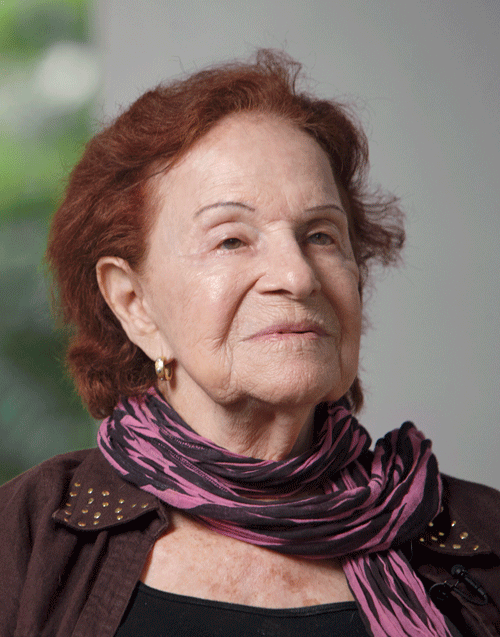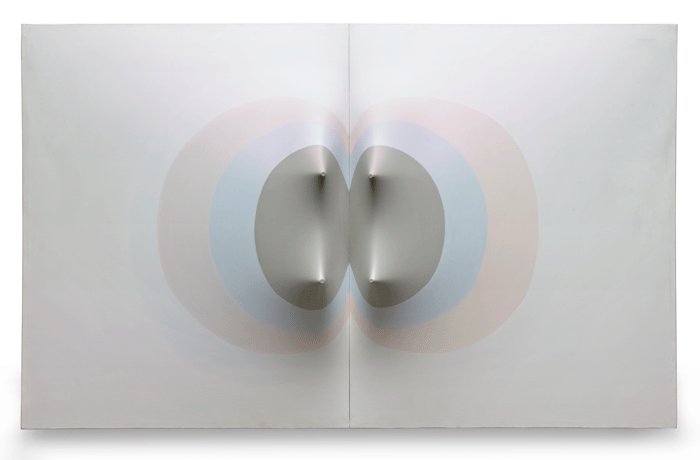
Island Identity
The title of Zilia Sánchez’s exhibition at the Phillips Collection references her Cuban homeland and long residence in Puerto Rico. Soy Isla (I am an Island) also evokes her singularity in the art world, creating in relative isolation for decades, prolific but largely unknown by the art world.
 Sánchez left Cuba and a promising art career after Castro came to power. Following a decade in New York, she relocated to Puerto Rico in 1971, where she has lived and worked since, little recognized beyond its shores. That changed dramatically in 2017 when her three-dimensional paintings were included in the Venice Biennale as well as the groundbreaking exhibition, Radical Women: Latin American Art 1960-1985. Now the 92-year-old artist is showcased in her first museum retrospective at the Phlllips Collection in Washington, D.C.
Sánchez left Cuba and a promising art career after Castro came to power. Following a decade in New York, she relocated to Puerto Rico in 1971, where she has lived and worked since, little recognized beyond its shores. That changed dramatically in 2017 when her three-dimensional paintings were included in the Venice Biennale as well as the groundbreaking exhibition, Radical Women: Latin American Art 1960-1985. Now the 92-year-old artist is showcased in her first museum retrospective at the Phlllips Collection in Washington, D.C.
Phillips senior curator of modern and contemporary art Vesela Sretenovic recalls seeing a Sánchez work five years ago at a New York gallery. “It spoke to me as a curator,” she said. “I had never seen anything like it.” The museum soon acquired the diptych “Maquinista.” Sretenovic, convinced a large-scale survey of the artist’s work was long overdue, soon organized Zilia Sánchez: Soy Isla.
The more than sixty works on display include paintings, sculptures and drawings, and span more than six decades. The highlights, however, are Sánchez’s distinctive “topologies” —a mathematical term that refers to geometric configurations unaltered by deformations such as stretching—which occupy a space between painting and sculpture. The artist builds a wooden armature over which she stretches canvas, creating a surface of peaks and valleys that Sánchez paints in a muted palette largely of black and white. Her work is resolutely abstract, yet also unmistakably evocative of the female body.
Sánchez’s relief paintings evolved from seeing the laundered bedsheets on which her father had died blowing in the wind, hitting against a wooden divider, turning the flat sheets into three-dimensional surfaces. Years later, a fellow Cuban emigré told Sánchez, a lesbian, “You did breasts, Zilia!” Sánchez stared adding “erotic” to the titles of her “topologies,” overtly acknowledging their bodily forms and sexual undertones. Her work conjures up women in mythology, warriors and heroines, as well as lunar motifs. Sánchez further underscores the corporeal aspect of her work by calling the lines drawn on abstract forms as tattoos.
wind, hitting against a wooden divider, turning the flat sheets into three-dimensional surfaces. Years later, a fellow Cuban emigré told Sánchez, a lesbian, “You did breasts, Zilia!” Sánchez stared adding “erotic” to the titles of her “topologies,” overtly acknowledging their bodily forms and sexual undertones. Her work conjures up women in mythology, warriors and heroines, as well as lunar motifs. Sánchez further underscores the corporeal aspect of her work by calling the lines drawn on abstract forms as tattoos.
Curator Sretenovic describes Zilia Sánchez’s work as poetic, dreamy and tough. “She is brave, both as a person and an artist. She has been so ahead of her times, and her work speaks to that stamina and perseverance.” Sretenovic praises Sánchez’s work for its “Caribbean sensibility, which comes across without words as a tribute to Latin culture.’”
Although the Phillips Collection bills itself as “America’s first museum of modern art,” it has not been at the forefront of exhibiting Latin American artists. The Zilia Sánchez exhibition, explains Sretenovic, is part of the museum’s efforts to be more inclusive. “It’s perfect for what the Phillips is about,” she says. “We take pride in that, in putting our words into practice.” In addition to placing Soy Isla in the context of a global modernism collection for which the Phillips is renowned, it’s the museum’s first fully bilingual exhibition.
If, like most museum goers, you haven’t yet discovered Zilia Sánchez’s elegant and provocative artwork, the exhibition is on display at the Phillips Collection until May 19, after which it travels to the Museo de Arte de Ponce in Puerto Rico from June 15-October 21, and El Museo del Barrio in New York City from November 20-March 22, 2020.
John Coppola